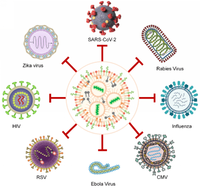Research And Development of Infectious Disease Vaccines
-
As of January 1, 2023, global vaccine development includes a total of 966 vaccine candidates, of which 23% (220) are traditional inactivated or attenuated vaccines. Advances in molecular technology have facilitated the development of other platforms, such as recombinant protein vaccines, nucleic acid vaccines, and viral vector vaccines, which have further diversified global vaccine development.
Recombinant protein vaccines accounted for the largest proportion of all pipeline in development, 22% (215), due to their good safety, stability and ease of manufacture. Nearly 100 recombinant vaccine candidates are currently in Phase I clinical development, currently the largest number of all types.
The success of COVID-19 mRNA vaccines has laid the foundation for the development of nucleic acid vaccines, including mRNA and DNA vaccines. These vaccines now account for the second largest portion of the overall pipeline, accounting for 18% (173). Due to the flexibility of this class of vaccines in developing vaccines against highly variable pathogens, many vaccine candidates are currently in development, including COVID-19 (95 candidates), influenza (24), and HIV (21).
Viral vector vaccines have also attracted attention in recent years because of their potential to induce strong and long-lasting immune responses, including adenoviruses, retroviruses, lentiviruses, and poxviruses. Currently, there are 133 candidate virus vector vaccines under development, and in particular, adenovirus vectors (82) have been widely used to develop vaccines for diseases such as Ebola, HIV, influenza and COVID-19. To circumvent the limitations of pre-existing immunity to adenovirus type 5 (Ad5), several adenovirus serotypes have been developed, such as Ad26, Ad35, and Ad11.
Conjugate vaccines followed with 11%, with 109 vaccine candidates. Conjugate vaccines are typically developed against pathogens such as meningococcus, pneumococcus and Haemophilus influenzae. These vaccines are based on the covalent linkage of immunogenic protein carriers (primarily tetanus toxoids, diphtheria toxoids, or group B meningococcal outer membrane proteins) to capsular polysaccharides or peptides to enhance immunogenicity and stability.
The top three diseases for which vaccines are being developed are all caused by viruses: COVID-19 (246; 25%), influenza (104; 11%) and HIV (84; 9%). In addition to more than 50 vaccines that have received market approval or emergency use authorization for COVID-19, 64 vaccine candidates have entered phase 3 or submitted marketing applications, 47% of which are mRNA vaccines. In the current pipeline, there are at least 14 nasal vaccines in development.
The high variability of the HIV viral genome and high levels of glycosylation of the HIV envelope glycoprotein (gp) often induce immune evasion, which has hindered the development of HIV vaccines. Currently, the hope is to stimulate the production of broadly neutralizing antibodies by targeting conserved regions of envelope proteins that vary little between HIV strains, such as gp160, gp41, and gp120. Novel vaccines such as viral vectors and mRNAs offer promise for the development of HIV vaccines, with two mRNA vaccines capable of inducing neutralizing antibody production currently in Phase I trials (NCT05001373).
In contrast to the dominance of new technologies in HIV vaccine development, 40% of influenza vaccine candidates are inactivated. Given the wide variety of influenza subtypes resulting from antigenic drift, universal vaccines are increasingly being developed to reduce the need for frequent vaccinations. These vaccines are designed based on highly conserved epitopes in viral hemagglutinin, neuraminidase, or other proteins. Six universal influenza vaccine candidates are currently in Phase 3 clinical trials.
In addition to the three diseases mentioned above, there are a large number of vaccines against respiratory syncytial virus in development (31), with recent breakthroughs in targeting stable pre-F proteins, two recombinant protein vaccines PF-06928316 and GSK3844766A producing >80% protection in Phase III trials. It was approved by the FDA in 2023. One mRNA vaccine (MRNA-1345) also showed >80% protection in Phase III trials and has been granted a breakthrough therapy by the FDA.
Non-viral pathogens such as malaria (57 species) and pneumococcus (40 species) also represent an important area. Conjugate vaccines are the main focus of pneumococcal vaccines, while recombinant proteins and viral vectors are the main platforms for malaria vaccines. Vaccines for diseases like Ebola are also being developed, building strength for future breakthroughs.
Currently, vaccine development is concentrated in the United States (355), China (271) and Western Europe (144). There are some differences between these regions in terms of technology platform preferences: the US has more nucleic acid vaccines in its pipeline, while the Chinese pipeline has more inactivated vaccines and the fewest virus-vector vaccines than the US and Western Europe. The majority (68%) of vaccine candidates were developed independently or in collaboration with private companies, while 25% were developed by academic or other non-profit organizations. Notably, candidate vaccines against HIV and malaria are mainly being developed by academic or other non-profit organizations.
The success of vaccine development depends to a large extent on the identification of effective antigens and the application of technical platforms. Moreover, international cooperation and coordinated efforts are essential to the achievement of these goals. The COVID-19 outbreak has highlighted the importance of global cooperation in responding to public health emergencies and demonstrated the potential benefits of sharing resources and expertise to accelerate vaccine development and deployment. This includes sharing scientific resources and expertise, collaborating on research and development, and establishing coordination mechanisms for outbreak preparedness and response.
As a professional PEG derivatives supplier, Biopharma PEG is committed to providing some PEG products such as mPEG-OH, mPEG-N,N-Ditetradecylacetamide (ALC-0159) as ingredients used in COVID-19 vaccines.
